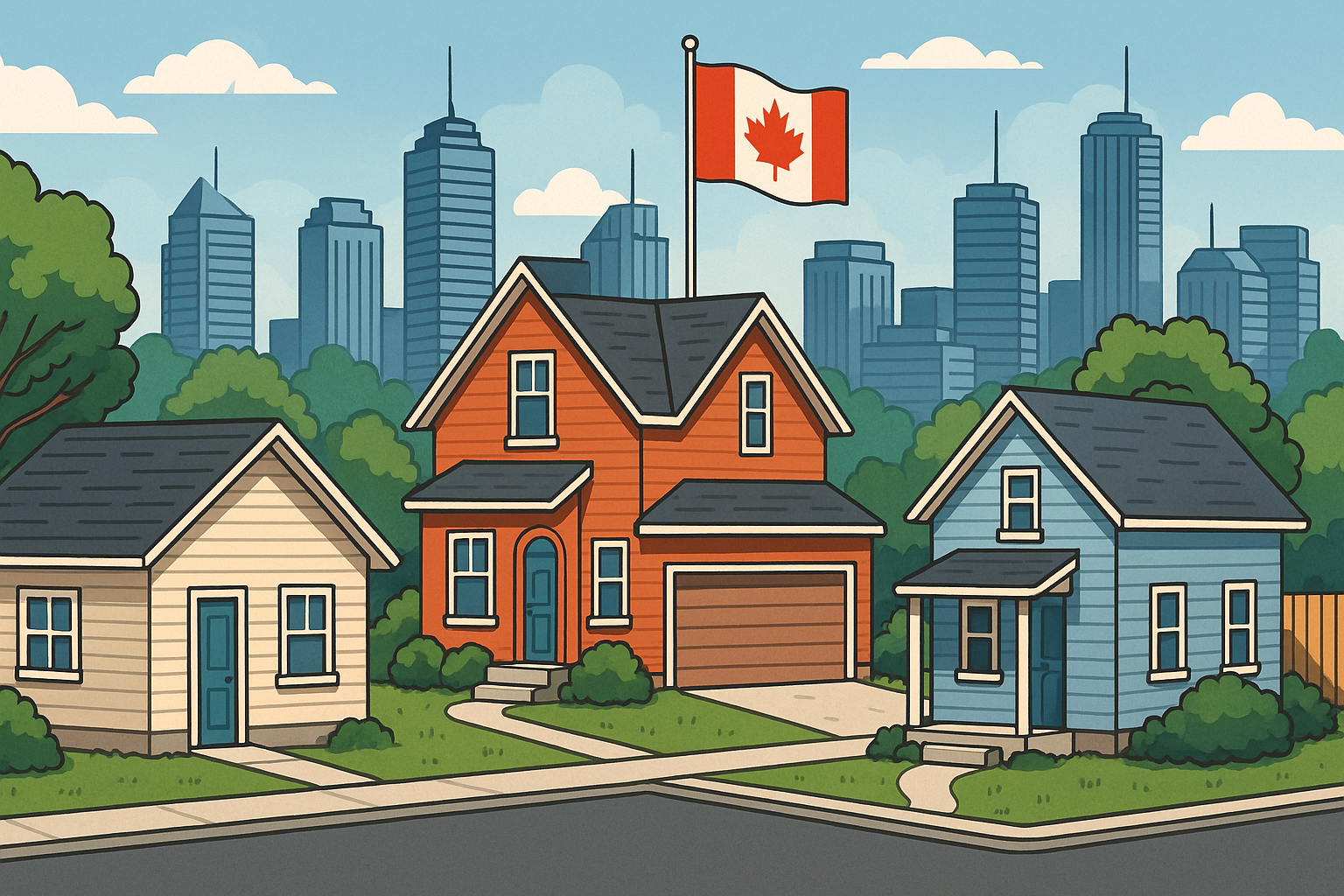
Are ADUs a Solution to Your City’s Housing Crisis?
Estimated reading time: 8 minutes
Key Takeaways
- Flexible Housing Options: ADUs provide self-contained, secondary units that can increase housing supply without large-scale developments.
- Gentle Density: These units promote incremental housing growth in established neighbourhoods, easing urban density challenges.
- Regulatory and Zoning Challenges: Despite their promise, ADUs face hurdles such as restrictive zoning, permitting fees, and equity concerns.
- Complementary, Not Panacea: ADUs can help address affordable housing shortages when paired with comprehensive zoning reforms and investment in social housing.
Table of contents
- The Housing Crisis in Canadian Cities
- ADU Solution: What Are ADUs and How Are They Being Used?
- How ADUs Offer a Potential Housing Solution
- Zoning Loophole: Zoning and ADU Implementation
- Affordable Housing: Limitations and Challenges
- ADU Solution in Action: Case Studies from Canadian Cities
- Are ADUs a Long Term Solution?
- Frequently Asked Questions
The Housing Crisis in Canadian Cities
Canadian cities are grappling with escalating real estate prices, rapidly rising rents, and a shrinking stock of affordable housing. Major centres like Toronto, Vancouver, and Montreal have experienced pricing surges that put middle-income families at a disadvantage. Limited housing supply, restrictive zoning policies, rapid population growth, and the financialization of housing are key contributors to this crisis.
For instance, many neighbourhoods remain zoned exclusively for single-family homes, which restricts new development options. To learn more about these zoning challenges, visit this guide on ADU zoning.
ADU Solution: What Are ADUs and How Are They Being Used?
Accessory Dwelling Units (ADUs) are secondary, self-contained living spaces built on the same lot as a primary residence. Typically complete with a separate entrance, kitchen, and bathroom, ADUs can appear as basement suites, garden suites, or even detached laneway houses.
For a comprehensive overview, check out ADU definitions and terminology.
Cities like Vancouver, Toronto, and Montreal have adapted policies to incorporate ADUs into their housing strategies. In Vancouver, laneway houses have increased housing supply, while Toronto’s garden suites offer a viable option for secondary housing. Detailed permitting guidelines are available for Vancouver and for Toronto.
How ADUs Offer a Potential Housing Solution
ADUs provide several advantages:
- Incremental Growth: They allow for a gradual increase in housing stock without the disruption of large development projects. Read about urban infill strategies.
- Flexible Options: Homeowners can use ADUs for multi-generational living, rental income, or accommodating aging family members. For designs that support aging in place, visit this resource.
- Affordability: While market rates often apply, ADUs present a less expensive alternative compared to new high-rise condos.
Overall, ADUs can complement broader affordable housing initiatives by adding diversity to housing stock while maintaining neighbourhood character.
Zoning Loophole: Zoning and ADU Implementation in Canadian Cities
Zoning loopholes provide opportunities for ADU implementation by allowing secondary suites in areas traditionally reserved for single-family homes. Municipalities are using these loopholes to:
- Facilitate Secondary Suites: By passing innovative by-laws or pilot programs, cities enable the conversion of basements or garages into new living spaces. More details can be found here.
- Encourage Incremental Density: This measure helps ease the housing shortage through immediate, albeit limited, density increases. Learn about backyard suites.
- Provide Short-Term Relief: Although effective in the short run, zoning loopholes are not a substitute for comprehensive land use reforms.
Affordable Housing: Limitations and Challenges of the ADU Solution
Despite their benefits, ADUs face several challenges:
- Affordability Limitations: ADUs often adhere to market rental rates, which may not serve the lowest-income households. Explore potential solutions here.
- Equity Concerns: Construction is mainly accessible to homeowners with sufficient capital, potentially reinforcing existing wealth gaps. Financial strategies are discussed here.
- Infrastructure Impact: Added residents can stress local services like parking, utilities, and schools.
- Regulatory Hurdles: Complex permitting and added fees can delay or hinder ADU projects. For an in-depth look at the permitting process, see this guide.
ADU Solution in Action: Case Studies from Canadian Cities
Real-world examples from cities like Vancouver, Toronto, and Montreal highlight both the promise and limitations of ADUs.
Vancouver: Early adoption of laneway houses expanded housing but maintained market-rate pricing, limiting affordability.
Toronto: Expanded permissions for garden suites have spurred growth, though the long-term impact is still under evaluation. More about Toronto’s permitting process can be found here.
Montreal: Increased conversions of basements and garages show potential, yet strict regulatory constraints persist.
Are ADUs a Long Term Solution?
While ADUs offer a flexible and innovative tool to alleviate housing shortages, they are not a standalone solution. A multifaceted approach is required:
- Comprehensive Zoning Reform: Broader changes in land use policies are needed to allow varied housing types beyond ADUs. Additional information is available here.
- Investment in Non-Profit and Social Housing: Support for vulnerable populations must be strengthened through targeted investments and policy initiatives.
- Stronger Tenant Protections: Ensuring security against displacement is critical for sustainable urban planning.
In summary, ADUs are a valuable tool when integrated into a comprehensive urban planning strategy that addresses affordability, equity, and community sustainability.
Frequently Asked Questions
Q: What exactly is an ADU?
A: An ADU—or Accessory Dwelling Unit—is a secondary, fully functional living space located on the same lot as a primary residence, often used for rental income, multi-generational living, or as a flexible housing solution.
Q: Are ADUs a cost-effective solution for affordable housing?
A: While ADUs can be more affordable than large-scale developments, they often align with market rates, meaning supplementary policies or subsidies may be needed to serve low-income households.
Q: How do zoning laws impact the construction of ADUs?
A: Zoning laws can either restrict or enable ADU development. Many municipalities are using zoning loopholes to permit secondary suites in single-family areas, though broader zoning reforms are necessary for long-term solutions.

Leave a Reply